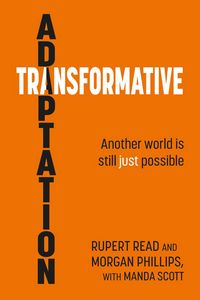Book reviews – Heath, Read/Phillips/Scott, Stoll
 Communist idea
Communist idea
The Idea. Anarchist Communism Past, Present and Future. By Nick Heath. Published by Just Books Publishing, 2022. ISBN 9781739723712
Suitably enough, The Idea, a book on the history of anarchist communism, is a dense, brick-like volume of nearly 500 pages, detailing the key figures, movements, activities, and publications of Anarchist Communists (AnComs) throughout history.
Anarchist communism, as opposed to anarchist collectivism, is the only anarchist tradition that explicitly calls for the abolition of the market economy and exchange value. Despite its many challenges, it has endured to the present day.
No movement is overlooked, with particularly extensive entries on France and documentation of the significant tendencies in Russia, France, Latin America, Ukraine, and beyond. The AnCom tendencies in China, Japan, and Korea are also covered, drawing in part on the published works of one-time SPGB member and political historian John Crump.
The Idea is a meticulous study that separates the wheat from the chaff, focusing on movements and organisations with a class-struggle perspective. However, as the book itself illustrates, many historical anarchist groups were far less discerning in their alliances. The book can be recommended to anyone with a historical interest in libertarian communism. Heath’s work is admirable in its scope and depth.
Nick Heath’s political journey began with the Labour Party, then the Communist Party, before he ultimately embraced anarchist communism.
It must be noted some key lessons emerge from this volume. Individualist tendencies are a dead end—sometimes literally. A lesser known and striking example being the case of Museifukyosanto, a small AnCom party in Japan that, being structured along Leninist lines, veered into adventurism, leading to the arrest of more than 700 of their comrades. The end fate of active anarchists tends to follow one these paths: imprisonment, exile, murder (often at the hands of the state), or suicide. To paraphrase a certain British prime minister, the problem with anarchism is that eventually, you run out of other anarchists.
It would be remiss not to mention the example of Korean AnComs, who, between 1910 and 1945, actively participated in electoral politics. This made their position similar to ours in that respect. They achieved notable success, serving in the Korean Provisional Government and later securing positions in the cabinet.
Nick Heath’s book is well worth reading and is a solid example of a disciplined work in a sea of anarchist garbage that was previously published and no doubt will come later. The Idea should interest anyone seeking libertarian socialist solutions to the practical problems of organisation and decentralised power.
 Transformism
Transformism
Transformative Adaptation. Another world is still just possible. By Rupert Read and Morgan Phillips with Manda Scott. Permanent Publications. 2024. 102pp.
This is a collection of short essays written by the editors, Rupert Read and Morgan Phillips, and by other contributors – with titles like ‘Transformative Adaptation as Part of the Emerging Climate Majority’, ‘How we will Free Ourselves – Together’, and ‘Thrutopia: Creating a New Story for a World Undergoing Transformation’.
So what do these writers mean by ‘transformative adaptation’? Most of them talk about a wide variety of what they see as ecologically beneficial initiatives and activities, for example restoration of wetlands, ‘agroforestry hubs’, biodiverse planting schemes, community food-growing sites, and use of green technology. Among specific ideas put forward are ‘autonomous community-led centres focused on meeting local needs and building local resilience’. They give examples of this kind of thing they see as taking place in various parts of the world, for example Nepal, Kurdistan, and more locally in, for instance, the ‘Talking Tree’ project in Staines and the ‘Zero Carbon Guildford Climate Hub’. They see transformative adaptation as going beyond efforts to simply cut down on carbon emissions and be generally more environmentally conscious (they describe that as ‘mitigation’) and characterise it as part of the need to ‘work with nature not against her’ so that ’ecological breakdown can be reversed’. Above all they stress that, if the world carries on along its current anti-ecological track (COP, for example, is seen as a failure and a fraud, ‘a surrender to the forces of big energy and big capital’), it will quickly lead to a situation where ‘the very habitability of our earth teeters’.
But what does this book have to say about the political dimension of climate change and global warming and efforts to curb or reverse it and protect the environment? It says a certain amount. It refers to what is happening as ‘a crisis of political economy’, whereby we all live in a system that demands continuous economic growth’ and creates ‘dire levels of inequality that would have made Roman emperors blush’. It further states, that ‘climate stability and capitalism – in any form – are not compatible’, that ‘unimaginable “profits” continue to be made, as capital attempts to commodify life itself’, and that to remedy this we need ‘societal transformation’.
So far so good, except that it seems to think that all this can somehow happen within the system of capitalism and its buying and selling imperative and talks about ‘exerting pressure on government’ and ‘on decision makers’, as though governments were somehow neutral and their purpose was something other than managing the capitalist system in the interests of the tiny minority who monopolise the wealth of society. So the book states the undeniable truth that ‘the solutions are available, we just need to take collective action and implement them in our communities’.
If ‘collective action’ simply means local planting schemes, ‘green’ technology and the like, clearly this will do little more than scratch the surface of the problems of the environment and inequality they point to. So, though we cannot blame the advocates of transformative adaptation for wanting to do something practical to rescue an overheating planet from the ills of capitalism, it cannot in itself feasibly be seen as a wider effective solution.
However, to be fair this book does end up going somewhat further, and that’s mainly thanks to its final chapter contributed by the novelist Manda Scott, who talks about the need to imagine ‘how our lives would look and feel if we let go of our encultured drive to engage in a market of goods and services’ and states flatly that ‘capitalism is not compatible with a flourishing web of life’.
Groups and movements that offer examples of self-organisation, democratic cooperation and sharing of resources and goods, which this book wants to see a spread of, offer something of an antidote to those single-issue campaigns calling on government to bring in various reforms which, even if enacted, rarely do more than tinker at the edges of the massive problem constituted by the whole system of production for profit. But the most radical of the ideas put forward here, that of a ‘parallel government’ possibly leading to a more democratic system and even perhaps to some form of non-monetary economy, seems unnecessarily complicated compared to using simple democratic political action via the existing system of elections as a route to the establishment of a democratic, moneyless, marketless society of common ownership and production for direct use. In Manda Scott’s words, ‘a system designed to meet the needs of all people within the means of the living planet’ and ‘a world that is fully connected, where we are not born to pay bills and then die’.
HKM
 Capitalism everywhere?
Capitalism everywhere?
Profit: an Environmental History. By Mark Stoll. Polity £17.99.
This volume contains a great deal of useful information, not just about the environment and how production has affected it, but also on the history of technology and industry, and there are many pages of references.
Various kinds of pollution are referred to, such as the massive oil spills from the Torrey Canyon supertanker in 1967 and the Deepwater Horizon drilling platform in 2010. But environmental impacts go back much earlier. In the Middle Ages, for instance, silver and gold were imported to Italy to be minted into coins, which led to toxic chemicals being washed into streams and rivers near the mines, in Bohemia and other places. Areas near the mines suffered from deforestation. By the seventeenth century sugar refineries and other industries in the Netherlands emitted vast amounts of stinking coal smoke. In the Americas, growing tobacco depleted the soil, but colonists just moved to extensive uncleared land. In the nineteenth century Britain was the largest producer of copper, which meant the emission of poisonous substances such as sulphur dioxide and arsenic. A lot more material along similar lines is surveyed here.
However, the book has some negative points too. For some reason, the author refers several times to the religious views of various individuals. Does it really matter that Rachel Carson, author of the conservationist classic Silent Spring, was a Reformed Protestant or that Bill Gates used to be a Congregationalist?
More significantly, Stoll has a very all-embracing approach to capitalism, which he sees as an economic system where owners of accumulated wealth invest it for profit in extracting raw materials or producing and distributing goods. There have been various forms of it over the centuries, from incipient capitalism to plantation capitalism in ancient Greece to industrial capitalism and present-day consumer capitalism. He writes: ‘we cannot live with capitalism and we cannot live without it. At best, we can work to ameliorate its worst effects.’ And it ‘is rooted in human nature and human history’. Wage labour gets an occasional mention but does not seem to be viewed as an essential part of capitalism. Nor is it recognised that the way most people made their living has varied enormously over the centuries. Furthermore, his idea of profit goes well beyond the notion of surplus value as an intrinsic part of the employment-and-wages system, since he states that forty thousand years ago people made a profit by exchanging tools they had made for other goods they did not have to make themselves.
From the late nineteenth century, industrial capitalism has come to be gradually replaced by consumer capitalism, with its emphasis on advertising and built-in obsolescence. In the US, it seems, a piece of clothing is worn on average seven times before being discarded. The biggest companies sell to consumers rather than manufacturing goods (Amazon and Walmart, for instance).
It is not clear, but Stoll appears to see capitalism as more than just islands of commodity production within a wider economy. The book contains much of interest but its approach to capitalism leaves a lot to be desired, not recognising that the drive for profit is an essential part of a system built on wage labour and production for sale.
PB
